Folklore Exhibition Room
The Folk Exhibition Room displays materials related to Inagi City's annual events, traditional tools, local performing arts, stone artifacts, fishing tools, and more.
| Exhibition Theme | Overview | Exhibition Content | |
|---|---|---|---|
| 1 | Village Life and Annual Events | Annual Events | Annual Events and Folk Tools Held at the Farm |
| 2 | Living with Private Homes | Villages and Houses | Model of a traditional house, topographical model of the Sakahama area, etc. |
| 3 | Folk Tools in Daily Life | Tools for Clothing, Food, and Shelter | Folk tools for clothing, food, and housing used in daily life |
| 4 | Farming Tools Used in Agricultural Work | Agricultural Tools | Farming tools used in rice cultivation, field farming, and mountain work |
| 5 | Pear Cultivation in Inagi | Pear Cultivation | The History of Pear Cultivation in Inagi and the Traditional Tools Used |
| 6 | Edo's Satokagura and Local Performing Arts | Local Traditional Performing Arts | Edo-style Kagura, Lion Dance, Festival Music, and Gagaku |
| 7 | Stone Structures and Popular Beliefs | Stone Structures | Jizo Bodhisattva Tower, Koshin Tower, Bato Kannon Tower, etc. |
| 8 | Events and Beliefs Related to Snakes | Events More Than Snakes | Snake-related events and beliefs held at Momura Myoken Shrine |
| 9 | Living with the Tama River | Tamagawa | Types of river fishing, ferry terminals, and river boats on the Tamagawa River, and how to build river boats. |
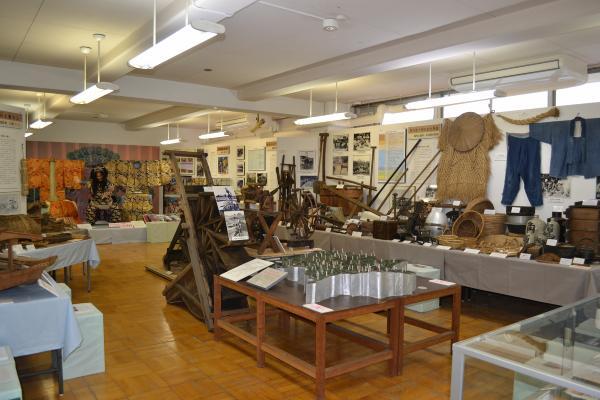
Folklore of Inagi
Living with Private Homes
In the Inagi City area, a lifestyle centered around agriculture has continued since ancient times. Considering the geographical conditions such as hilly areas and flatlands, houses were built and settlements were created. Models of traditional houses from the Edo period that were located in the Sakahama area, as well as models of storehouses and firewood sheds, are on display. Additionally, a topographical model created by researching the old place names and settlements of the Sakahama area is also on display.
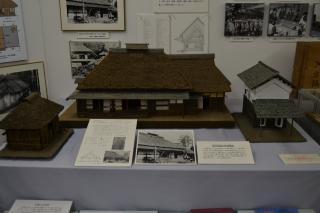
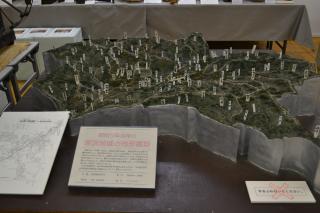
Living with Folk Tools
We are exhibiting tools used in daily life, including clothing, food, housing, and agricultural work. These tools include work clothes, footwear, cooking utensils, farming tools, silkworm rearing tools, and pear cultivation tools, all of which have been used in a lifestyle centered around agricultural work. In particular, various tools related to pear cultivation, a specialty of Inagi, are on display.
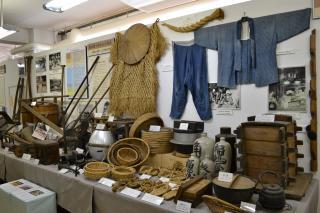
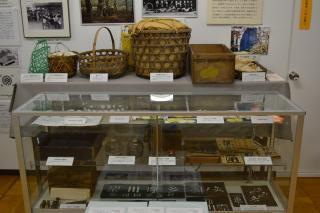
Edo's Satokagura and Local Performing Arts
Edo Sato Kagura is said to have been founded in the early Muromachi period and is designated as an important intangible folk cultural asset of the country. It exhibits tools and costumes used in Kagura, as well as life-sized Kagura deities. In addition, it introduces local performing arts such as lion dances, traditional music, gagaku, drums, and matoki yari.
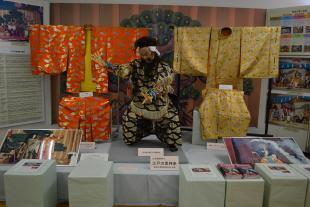
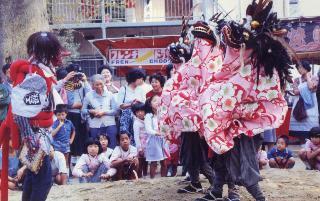
Stone Structures and Popular Beliefs
In the old roads and the precincts of shrines and temples within the city, various stone structures built since the Edo period are distributed. Representative stone structures include Jizo Bodhisattva towers, Kōshin towers, and Batō Kannon towers, which are introduced with life-sized models. Additionally, the local folk beliefs related to the regions where these stone structures were built are also introduced.
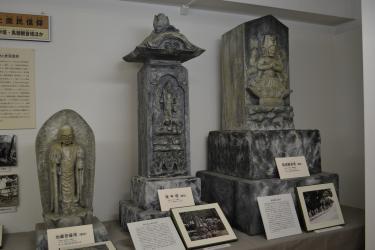
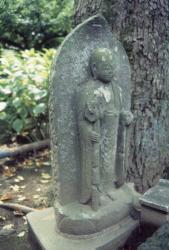
Events and Beliefs Related to Snakes
The Snake Event is a folk event held every year on August 7 at Myoken-son in Momura, and it is designated as an intangible folk cultural asset of Tokyo. Participants twist blue grass to create a large snake and pray for protection from misfortune for the year. A life-sized model of the snake's head and photographs of the day's events are on display.
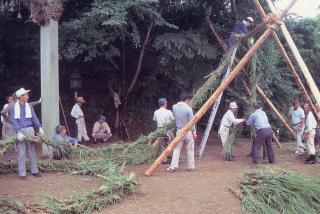
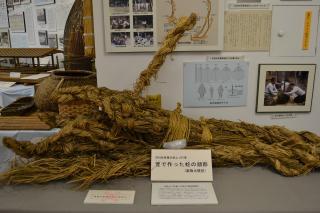
Living with the Tama River
In the Tama River around Inagi, various lifestyles related to the river have been observed since ancient times. There were river fishing, including sweetfish fishing, ferry stations set up in three locations within the city, and the construction of river boats on the Tama River. Here, we exhibit various fishing tools used in river fishing, models of houseboats, and tools for building river boats.
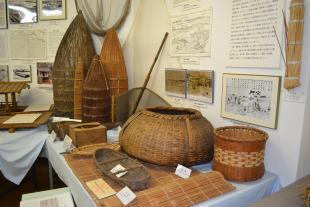
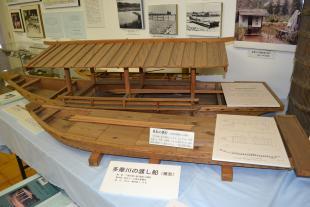
Please let us know your feedback on how to make our website better.
Inquiries about this page
Inagi City Local History Room
1-9-1 Hirao, Inagi City, Tokyo 206-0823
Phone number: 042-331-0660 Fax number: 042-331-0660
Contact the Lifelong Learning Division, Department of Education, Inagi City

















